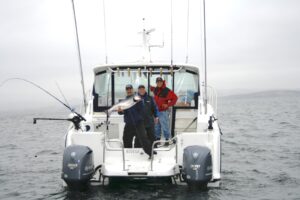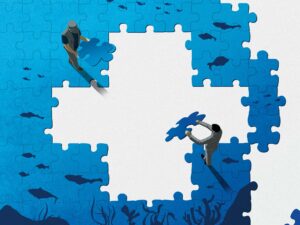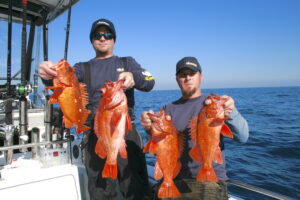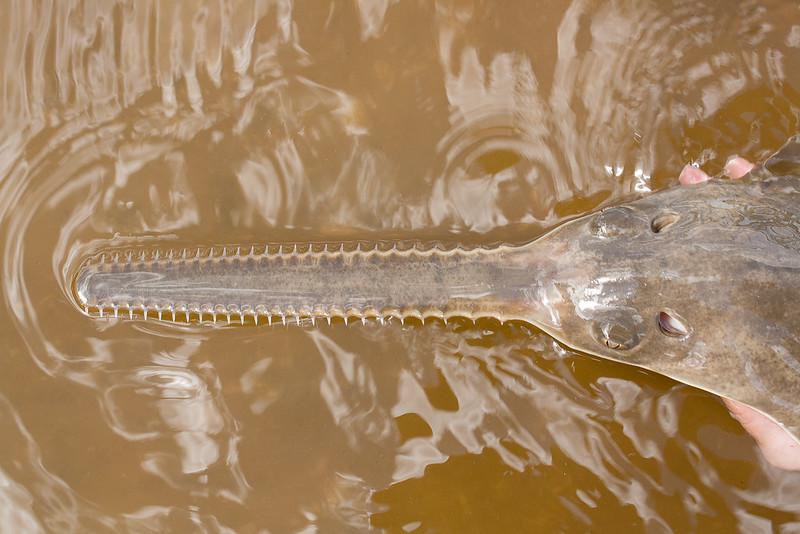
Scientists and fisheries experts are making some progress on a mystery malady causing odd spinning behavior of fish in the Florida Keys. But the root cause of the problem, which may also be linked to the deaths of dozens of endangered smalltooth sawfish, has not been definitively determined.
In the fall of 2023, Bonefish & Tarpon Trust (BTT) and the Lower Keys Guides Association (LKGA) began receiving reports of fish exhibiting strange behavior, including spinning when stressed, such as when a light was shined on them at night. That behavior continued through the winter. Most of the sightings have been focused on an area between Boogie Channel and Bow Channel in the Lower Keys, though recent reports have emerged from west of Bow Channel and Key West and east of Big Pine Key.
Unexplained Sawfish Deaths
Recently, the Florida Fish and Wildlife Commission (FWC) has also reported the documented deaths of more than three dozen endangered smalltooth sawfish. The actual number is likely much higher because sawfish are negatively buoyant so are unlikely to float after death.
The National Oceanic and Atmospheric Administration (NOAA) has announced that it will initiate an emergency response effort to rescue and rehabilitate affected sawfish in hopes of preventing additional deaths. Studies conducted by BTT and the LKGA have conducted recovery studies that have demonstrated that symptomatic fish can recover.
BTT has been among the groups involved in research to try to determine the cause of the strange spinning, working with the FWC and other partners including Florida International University’s Fish Ecology Lab, University of South Alabama, Florida Gulf Coast University Woods Hole, and Florida Department of Environmental Protection (FL DEP).
“Collaboratively, we’ve been working pretty much non-stop since January to figure out what’s causing these fish to spin, what’s causing the impacts to sawfish, what are the fishery impacts and, importantly, what can we do about it,” said Dr. Ross Boucek, BTT’s Florida Keys Initiative Manager, in a recent informational livestream.
Through intensive testing of water samples, as well as affected fish themselves, researchers have not found any signs of parasitic infections among affected fish, nor any organ abnormalities. Red tide was also not found in impacted areas, and the Florida Department of Environmental Protection was able to rule out other common contaminants.
High Levels of Gambierdiscus
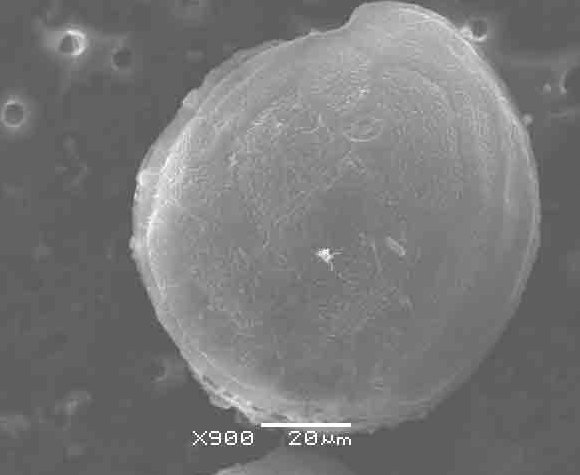
However, testing did uncover unusually high levels of an organism associated with algal blooms. Dr. Mike Parsons, a professor of marine science at Florida Gulf Coast University, said that FWC had found the benthic dinoflagellate gambierdiscus in some water samples, as well in the gut contents of at least some mullet. Parsons noted that while gambierdiscus is typically a benthic species, meaning it lives on the seafloor, it had been found in the water column.
“We sent down a crew in early February working with Ross and the Lower Keys Guides Association to collect some of these seagrass samples, some algal samples and water samples to try to get a better handle on what these benthic dinoflagellates were doing,” Parsons said. “We noticed that the gambierdiscus abundances were anywhere from five times higher to about 30 times above averages that we’ve seen over the past 10 years.”
The gambierdiscus species produces various toxins, including ciguatoxins, the root cause of ciguatera poisoning, a well-known food borne illness that can cause neurological symptoms in humans who consume affected fish. The organisms that produce ciguatera are typically more common in environmentally-stressed reef areas.
Researchers stress that it’s too early in their testing to definitively conclude that there is a direct link between the increased levels of gambierdiscus and spinning fish. Even at the elevated levels found, gambierdiscus will not discolor water to a degree where it could be noticed. Parsons noted that gambierdiscus concentrations typically decline as waters warm, so summer could suppress the organism’s population. The team is continuing their lab work in search of more definitive conclusions. BTT successfully advocated for the Florida Legislature to allocate $2 million in the 2024-25 budget to research and address the suspected toxin.
The general public is also being asked to contribute to the effort by reporting sawfish sightings through an emergency hotline. (Email sawfish@myfwc.com or call 844-472-9347.) NOAA and FWC will work together to find afflicted sawfish, capture them and take them to one of at least three facilities that have signed up to try to rehabilitate the fish. Smalltooth sawfish are related to rays, skates and sharks. Their numbers have dramatically declined from the impacts of unintentional capture in commercial fishing and from impacts of habitat degradation from coastal development. They were formally listed as endangered in 2003.
Many Species Affected
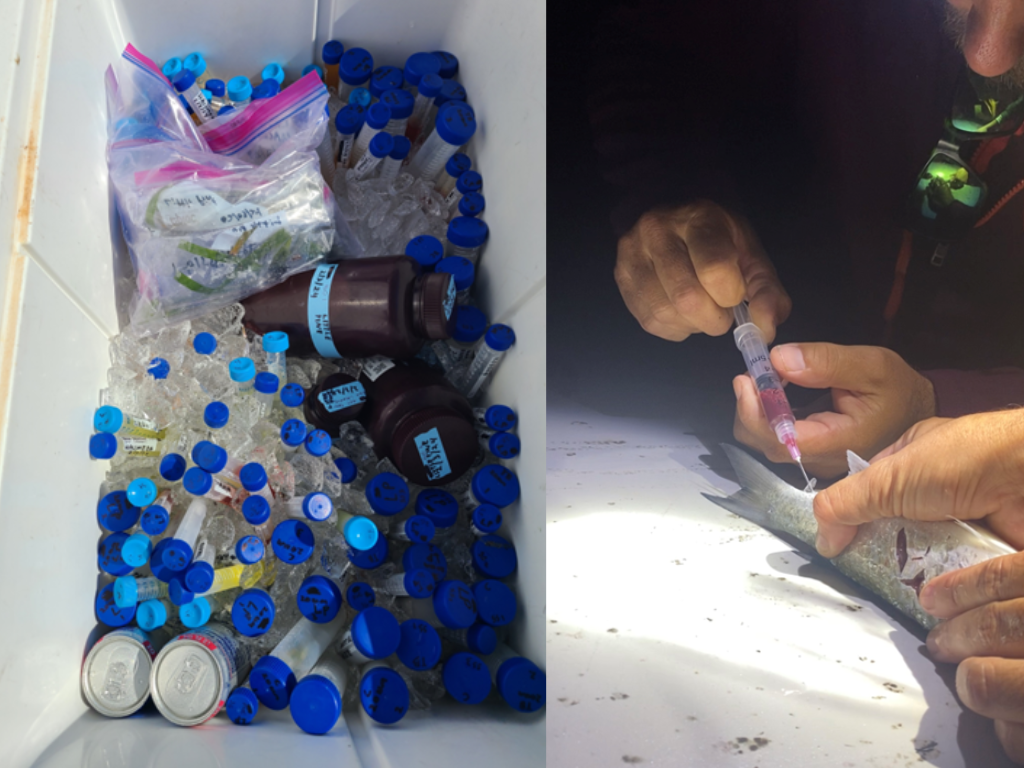
While impacts to endangered sawfish have generated the most significant response, whatever is causing spinning fish does not discriminate. According to the BTT, at least 40 species have exhibited these abnormal behaviors, including silver mullet, tarpon, permit, snook, pinfish, bigeye scad, ballyhoo, jack crevalle, yellow jack, blue runner, southern stingray, mutton snapper, mangrove snapper, cubera snapper, lane snapper, leatherjacket, yellowfin mojarra, scaled sardine, toadfish, goliath grouper, blue striped grunt, redfish, lemon shark, Atlantic sharpnose, smalltooth sawfish, and spadefish.
In addition to being asked to report sawfish sightings, anglers are being told to avoid targeting fish exhibiting spinning behavior. And, though it is uncertain if eating affected fish could cause human health problems, eating affected fish is also not recommended.
“We should use common sense,” said Dr. Alison Robertson, an associate professor of marine sciences at the University of South Alabama. She’s been testing water and fish tissue samples in her lab.
“Just like you wouldn’t shoot and eat a deer that’s foaming at the mouth with bloodshot eyes, if you see a snook spinning in a canal you shouldn’t scoop it up and throw it in a frying pan,” added Boucek.


